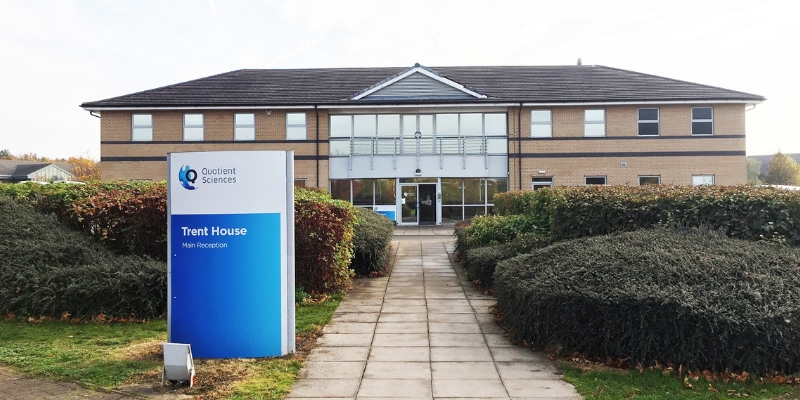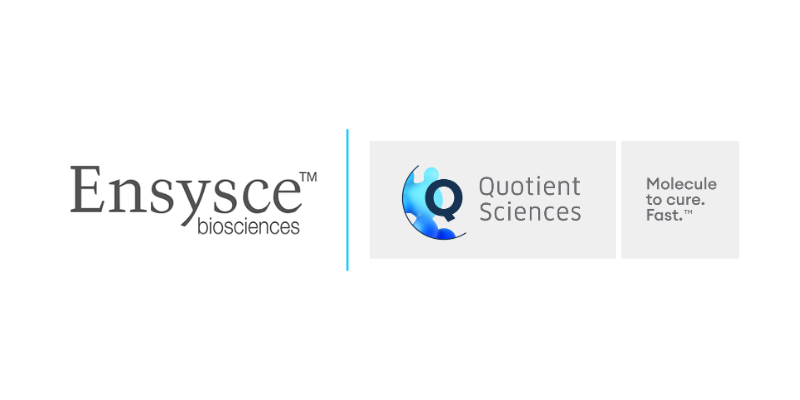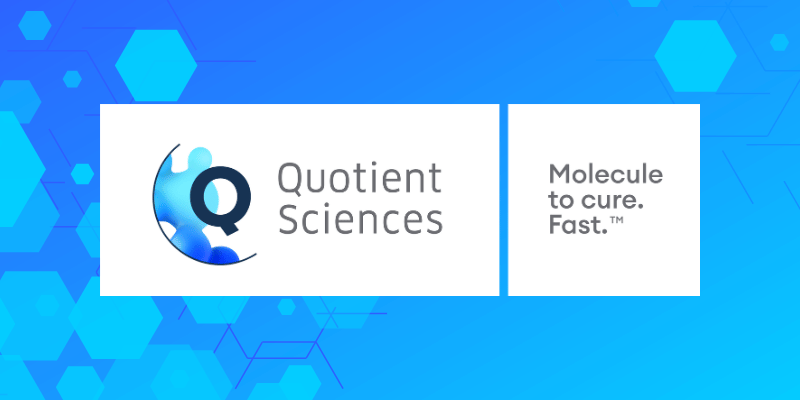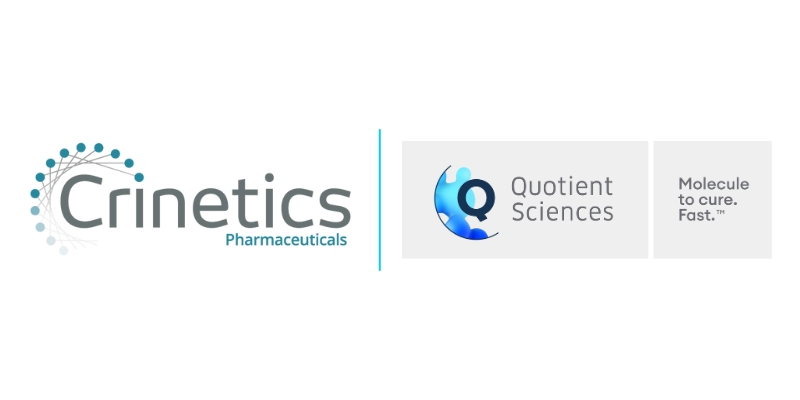Quotient's Vice President of Pharmaceuticl Sciences, Dr Andy Lewis was featured in a recent article in Pharmaceuticla Technology Magazine.
"The Earlier the Better for Formulation Strategies"
November 2, 2021 | Pharmaceutical Technology, Pharmaceutical Technology, November 2021 Issue, Volume 45, Issue 11
Investing in formulation strategies earlier on in development will maximize the chance of success.
The bio/pharmaceutical industry is under more pressure than other industries to create innovative products because of the time limits placed on patents and exclusive licenses for drugs (1). However, pharmaceutical drug development also suffers from significantly high and variable rates of attrition, attributed to factors such as formulation issues, solubility and bioavailability challenges, alongside a lack of efficacy (2).
Expenditure on R&D is rising year-on-year, with estimates for this trend to continue into the future (1). Therefore, expectations to achieve greater success with each drug molecule in development are becoming more pressing. Complex and difficult to formulate molecules are ever more present in development pipelines, and an overarching industry trend toward niche therapeutic and specialized disease areas persists, so the importance of innovative formulation strategies implemented early in the development timeline is becoming alarmingly apparent.
Under pressure
“No matter the modality, there has been increasing pressure for a number of years to advance new medicines through development as quickly as possible,” says Andrew Lewis, vice-president of Pharmaceutical Sciences, Quotient Sciences. To achieve a rapid time-to-market, a successful formulation development strategy must be in place, and in order to do that, formulators must consider some key aspects, he adds.
Understanding ways to enable rapid first-in-human assessments while also meeting study objectives; transitioning to a drug product that is suitable for proof-of-concept studies in a time efficient manner; and working out time and cost-efficient strategies for scale-up as product development progresses are imperative, Lewis continues. “Some trade-offs may need to be made at different stages of development but viewing the program with the next stage in sight, enables integrated development strategies to be developed to mitigate risks and accelerate molecules through development,” he says.
Jessica Mueller-Albers, strategic marketing director Oral Drug Delivery Solutions, Evonik, agrees that pressure to speed up drug development has been increasing. “This [increased pressure] is because many new drugs target small therapeutic areas, where it is essential for pharma companies to be first in the market from an economic perspective,” she notes.
“In recent years we have seen that many of the drugs approved are high-priced specialty drugs for relatively small numbers of potential patients,” Mueller-Albers says. “This [trend] contrasts to the top-selling drugs of the 1990s, which were lower-cost and created for large patient populations. Regarding formulation, the trend towards more specialty drugs requires new formulation approaches that use enabling technologies.”
To illustrate how the industry trend is moving away from blockbuster-type drugs, Mueller-Albers highlights the messenger RNA (mRNA) technology platforms that came to prominence in 2020 through the launch and roll-out of certain COVID-19 vaccines. “This [technology] was a starting point for a new class of drugs, not only for prophylactic vaccines, but also therapeutic vaccines and other therapeutics for cancer and rare diseases,” she asserts. “Overall, mRNA has the potential to become a competitive modality across broad applications, especially as further advances in improving delivery and stability are made.”
Another example of a more specialized therapy is proteolysis-targeting chimeras (PROTACS), Mueller-Albers points out. “[PROTACS] are an emerging therapeutic modality with the potential to open a new target space via a degradation-based mechanism,” she says.
But in order to keep up with the time pressures, while developing specialty and niche therapies in particular, industry needs to improve R&D productivity, Mueller-Albers stresses. “The approach to improving productivity is reflected in the R&D budgets of different sized firms,” she explains. “Small companies generally devote a greater share of their research in developing and testing new drugs, which are ultimately sold to larger firms. Larger drug companies allocate a greater portion of their R&D spending to conducting clinical trials and developing improvements.”
Focusing on small companies, Stephen Tindal, director, Science & Technology, Europe, Catalent, emphasized the challenges they face regarding expertise. “One of the key challenges for any small pharma company is to hold sufficient expertise across the key disciplines of medicinal chemistry, material characterization, formulation and drug metabolism and pharmacokinetics (DMPK), in order to address all the possible combinations that could be required to progress a molecule from the modern discovery process,” he confirms.
If the trend of small companies developing APIs continues, then small teams will be required to navigate through the preclinical phase, which throws up resource and decision challenges, Tindal advises. “For example, in late-stage drug discovery, [the developer] may have a choice between four to six molecules, with each having its own unique potency, solubility, and API manufacturing challenges, and perhaps also the choice of whether to employ a salt form to improve poor solubility,” he says. “At this stage, the small team should choose to engage a formulator.”
Additionally, Sanjay Konagurthu, senior director, Science and Innovation, pharma services, Thermo Fisher Scientific, emphasizes the fact that between 70% and 90% of new chemical entities (NCEs) in development pipelines are poorly soluble. “NCEs often have bioavailability challenges when it comes to oral drug delivery, therefore, selection of the appropriate formulation technologies based on a deep understanding of the Developability Classification System (DCS) becomes important,” he notes. “A thorough understanding of the API physicochemical properties as it pertains to oral absorption is necessary to guide formulation strategies.”
The earlier the better
Generally, preclinical formulation development is focused on achieving a desired pharmacokinetic response in an animal model, while also keeping time and cost for formulation development at a minimum, Mueller-Albers confirms. “A structured approach starting at an early stage can help de-risk the drug development process and avoid costly late-stage failures,” she says.
“In order to properly triage a molecule in late-stage discovery, a formulator should be engaged to help provide a line of sight to the path for clinical evaluation and commercial development,” adds Tindal. “The assumption is that discovery molecules are precious, and formulation expertise will be able to progress any candidate, rather than discarding a molecule in favor of another with better properties at the end of a traditional API selection and development process.”
For Konagurthu, it is critical for formulation scientists to understand the benefits of investing in scale-up in the early phase of development. “At this stage, formulation scientists should obtain as much information as they can about what is happening at the mechanistic level of a formulation process because it is much less expensive to identify and address manufacturability problems earlier in the process than later,” he emphasizes. “In addition, evaluating formulation and process impact on product critical quality attributes help to mitigate scale-up problems.”
“Companies need ‘early formulation’ teams with expertise in physicochemical characterization and biopharmaceutics integrated with colleagues in drug discovery and medicinal chemistry to advise on candidate optimization and selection to maximize chances of success of a molecule” asserts Tindal. “But, it may not make sense to invest in a formulation technology until Phase I safety data is available, unless that study is performed in patients, where a finished dosage form may be desirable. As it can be challenging to fulfill both the clinical hypothesis and the long-term scale-up issues together, it is important to engage the formulator earlier to develop a long term strategy.”
Overcoming challenges
Very early on, when working with systemic oral small-molecule drugs, developers should consider delivering drug in solution to the gastrointestinal tract so that the drug can be absorbed, reminds Tindal. A positive to working in solution is that less API is required and is likely to provide more reliable data providing the API is at least reasonably stable. This could entail developing a solution, a powder, or a liquid that was in solution during processing and delivers a solution on dispersion, he adds.
“For these reasons, working with simple aqueous solutions, spray-dried amorphous dispersions, or lipid formulations, has turned the early development process on its head,” Tindal explains. “A formulator can accelerate API development, navigate through dose escalation studies, and use less API, all of which help to get more new chemical entities to Phase I proof of concept in healthy volunteers within an acceptable budget, with a focus on formulation development at a later stage.”
“The onus falls on formulation scientists to make sure they design a robust formulation that provides adequate bioavailability, stability, and manufacturability,” says Konagurthu. “This [responsibility] requires them to have proper knowledge about drug substance properties, how they interact, and any potential issues the scientist may face during formulation development.”
If the compound exhibits poor solubility or permeability for example, then the formulator should know to select a solubilization approach to improve oral absorption and bioavailability, Konagurthu continues. Some options available to formulators to overcome such issues include hot-melt extrusion, spray drying, coated beads, size reduction, lipid-based approaches, and so, on, he notes.
“By far the most common challenge when formulating small molecular weight drugs is improving poor solubility to maximize bioavailability,” Lewis confirms. “In developing the formulation strategy, it is essential to understand the basis for the poor solubility—whether it is dissolution rate limited or solubility limited—informed by the preformulation data package.”
Particle-size engineering technologies, such as micronization and nanomilling, can be used to improve the solubility of a dissolution rate limited API, whereas amorphous dispersions, using spray drying or hot melt extrusion, might be better for APIs that are solubility limited, Lewis states. “Also, in recent years we’ve seen lipid-based drug delivery systems and complexes become increasingly important tools in the quest to improve the oral bioavailability of poorly soluble drugs. It is not unusual for several technologies to be evaluated head-to-head in a clinical study in order to select one for further development based on their performance and implications for later development,” he adds.
Poor solubility or bioavailability of an API can be problematic in drug development and can lead to an incomplete or variable absorption of the drug, a higher impact of pH and food on drug absorption, and poorly controlled pharmacokinetics, Mueller-Albers asserts. “It is therefore extremely important to develop a formulation that maximizes the chance of good exposure, even if doing so requires additional time and cost. This is especially true as the solubility of new molecules becomes more demanding,” she says.
There are advanced solubilization technologies available that can help overcome the challenges of poor solubility, Mueller-Albers continues. Using the example of lipid-based technology, she states, “When drugs are orally administered, they can bypass first-pass metabolism through the lymphatic pathway. During intestinal lymphatic drug transport, long-chain and unsaturated lipids are assembled into chylomicrons (ultra-low-density lipoproteins) in enterocytes (intestinal absorptive cells). Chylomicrons are then exocytosed (excreted) from the cell and enter the lymphatic route. If lipophilic drugs are co-administered with these lipids, they are prone to incorporation into chylomicrons and can be delivered to the lymphatic system in the form of chylomicron–drug complexes. Thus, co-administration with lipids can enhance the lymphatic transport of lipophilic drugs.”
Novel approaches
To be able to select the most appropriate solubility enhancement technology and excipients for a molecule without requiring extensive and unnecessary testing it is possible to employ diagnostic tools, highlights Konagurthu. Using Thermo Fisher Scientific as an example, Konagurthu points to Quadrant 2, which uses proprietary computer algorithms to select the most effective solubility enhancement for a compound and which excipients should be used for formulation and process development.
“Furthermore, Thermo Fisher has developed an ‘Engineered Solutions’ approach to pharmaceutical product development by building predictive models that understand the interplay between materials, formulations, process, and biopharmaceutics,” says Konagurthu. “These predictive tools can de-risk formulation impact on scale-up and technology transfer to enable accelerated product development timelines.”
For Mueller-Albers, a significant new development in oral solid drug delivery technology is an empty ready-to-fill enteric capsule, designed to optimize gastric resistance and improve absorption for drug products targeted for release in the upper small intestine. “The high-quality hydroxypropyl methylcellulose capsules feature a precisely tailored functional coating that is well accepted by key regulatory bodies around the world,” she notes.
Additionally, a pilot program to review novel excipients has been launched by the Center for Drug Evaluation and Research that will provide new options for formulators to use in specialized drug products, Mueller-Albers discloses. “[The pilot program] is intended to allow excipient manufacturers to obtain FDA review of certain novel excipients prior to their use in drug formulations,” she says.
“Recent advances in small-scale ultraviolet probe dissolution apparatus have really helped to unlock the solubilization of API in bio-relevant media,” adds Tindal. “I would really like to see more advances in in-silico prediction, but remain skeptical that the models could be properly trained with a meaningful data set. Nonetheless, they can be very useful, if only for beginning a thought experiment, which can be a very useful part of the planning phase.”
“It is not uncommon for preclinical data to not reflect the human situation, which can lead to the wrong formulation strategy being selected, or sub-optimal formulation performance,” emphasizes Lewis. At Quotient Sciences, integrated adaptive clinical trials are used to guide formulation development and selection in human subjects, which, Lewis confirms, accelerates development. “These Phase I trials in healthy volunteers can be used to compare technological approaches head-to-head and select formulations for later dosing periods (e.g., multiple ascending dose) based on their performance,” he says. “We have also used these [trials] to bridge from a simple first-in-human formulation to a proof-of-concept ready formulation within study with a single regulatory approval.”
Furthermore, it is possible to obtain regulatory approval to dose any formulation within a design space that has been defined through the identification of a critical-to-performance formulation variable, Lewis continues. “The formulation to be manufactured and dosed can be modified, informed by the emerging clinical data (e.g., pharmacokinetic parameter) to ensure the target product profile is achieved,” he states. “This is all enabled by real-time adaptive manufacturing—products being manufactured immediately prior to dosing rather than months in advance of the clinical trial, accelerating development.”
Final thoughts
“Drug development is a balance between minimizing time to clinic and developing a promising formulation that meets pharmacokinetic targets,” reveals Mueller-Albers. “However, risk of failure of a molecule is not only related to its pharmacological and pharmacokinetic properties or its toxicity, but also to its manufacturability.”
A thorough understanding of the target product profile is necessary to be able to build a robust formulation strategy, emphasizes Lewis. Additionally, referring to the objectives and end-goals of a program is critical in order to ensure that the formulation developed meets the needs of each stage of development, he stresses.
“Formulators need to engage earlier, to overlap with the medicinal chemistry strategies, to partner with the medicinal chemists themselves in order to make decisions about API and drug product, and using formulation with API-sparing techniques that resolve any liabilities that the medicinal chemist cannot quickly fix without having to necessarily invest in a final formulation, but all the while, collecting data that move the project forward. Formulators also need to address all bioavailability factors and not just solubility,” concludes Tindal.
References
1. Statista, “Total Global Spending on Pharmaceutical Research and Development from 2012 to 2026,” statista.com, July 2021.
2. Therapeutics Research Institute, “Pharmaceutical Predictivity,” tri-institute.org, March 2021.
About the Author
Felicity Thomas is the European editor for Pharmaceutical Technology Group.
Article Details
Pharmaceutical Technology
Vol. 45, No. 11
November 2021
Pages: 16–19, 29
Citation
When referring to this article, please cite it as F. Thomas, “The Earlier the Better for Formulation Strategies,” Pharmaceutical Technology 45 (11) 2021.
To access the article on Pharmaceutical Technology's site, visit: https://www.pharmtech.com/view/the-earlier-the-better-for-formulation-strategies







